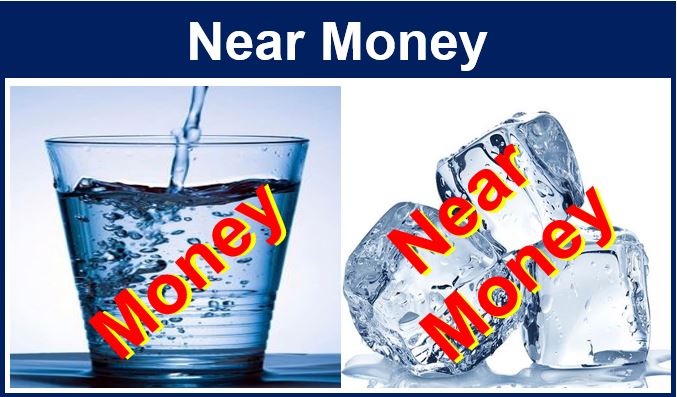What is near money? Definition and examples
Near Money, also known as Quasi-Money, refers to highly liquid assets that can rapidly be converted into cash such as short-term money market instruments and bank deposits. Near money is similar to cash equivalents.
Near money means non-cash assets that are very liquid but cannot be used directly for transactions.
Near money assets, while not immediately spendable, play a crucial role in ensuring individuals and businesses have rapid access to funds in response to financial opportunities or needs.
When determining the current money supply, economists and central banks may utilize near money. The money supply can tell us about the health of the economy.
The inclusion of near money in financial analyses allows for a broader understanding of liquidity in the market and helps in assessing short-term economic stability.

Examples of near money
The following items are examples of near money:
- Foreign currencies: especially the most widely-traded ones such as the US dollar, euro, British pound or Japanese yen.
- Savings accounts.
- Money market funds: open-ended mutual funds that invest in short-term debt securities such as commercial paper and US Treasury bills.
- Bank time deposits: money deposits in a bank that cannot be withdrawn before a certain period (unless a penalty is paid).
- Bonds: specifically those near their redemption date.
What is accepted as money?
Up to the 18th century, mainly gold and silver coins were accepted by the public as money. Since then, bank notes came on the scene, and then bank deposits subject to transfer by check.
Until recently, the majority of economists would agree that money stopped at that point. Today however, there is no clear-cut agreement on the definition of what constitutes money.
Among assets of lower liquidity, as long as whatever the holder owns can be turned into cash almost immediately, it is considered as near money.
Some differences between money and near money
Unit of Account – money is a unit or account, it is a common measure of value. Prices in shops, for example, are expressed in terms of money. Near money has no such function. In fact, near money’s own value is expressed in terms of money.
Making Transactions – we use money directly for making transactions, while near money is an indirect medium of exchange – we need to convert it into money first before it can be used for transactions.
Liquidity – money is 100% liquid, near money is not. Converting near-money involves time, and sometimes a fee (exchanging currency, or paying a penalty for taking your money out before the agreed date).
According to the Nasdaq Business Glossary, near money is:
“Assets that are easily convertible into cash, such as money market accounts and bank deposits.”
Video – What is Near Money?
This educational video, from our sister channel on YouTube – Marketing Business Network, explains what ‘Near Money’ means using simple and easy-to-understand language and examples.

